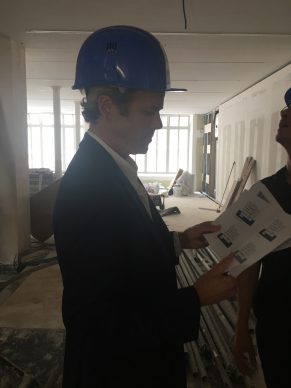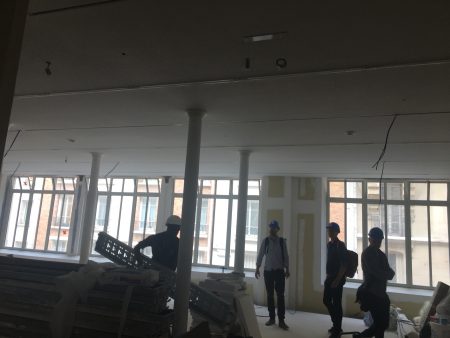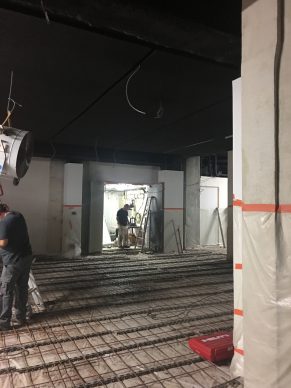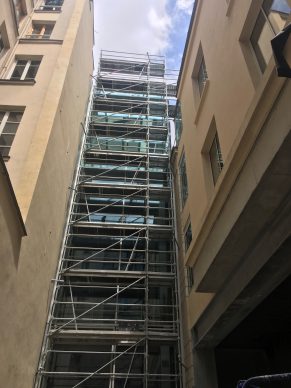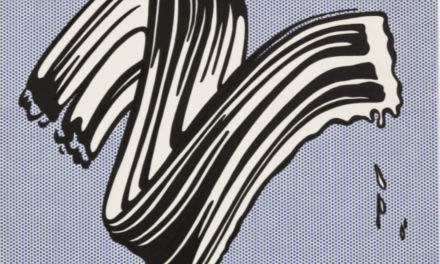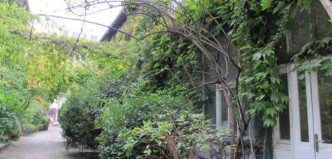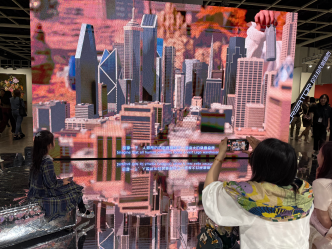Less familiar for an international audience perhaps is that the French family-run firm directed by Ginette Moulin is committed to contemporary art.
But times are changing. Moulin’s grandson Guillaume Houzé (born in 1981) is president of the Galeries Lafayette corporate Foundation, and has long been a fixture of the French art scene.
He also happens to be the director of communications at the Galeries Lafayette, which, under his stewardship, are now one of the largest sponsors in France of the FIAC, the Centre Pompidou, the Musée d’art Moderne de la ville de Paris…
He himself is a private collector of contemporary art.
Next March will see the opening of the new Galeries Lafayette Foundation, called Lafayette Anticipation, in Le Marais district at number 9 Rue du Plâtre.
This project is part of a larger enterprise driven by the group, which will also eventually encompass the whole section of the Marais located behind the BHV department store (also owned by the Galeries Lafayette group), a restaurant complex (Eataly) and luxury businesses, which will completely transform the profile of this area of Paris.
A few days ago, Guillaume Houzé invited me on an exclusive tour of the building site and explained the objectives of the Galeries Lafayette Foundation.
With his eternally youthful looks, he has successfully overseen an unusual project of extreme contemporaneity on an old site.
The operation is spectacular both for its modularity and its integration with the site itself, which is in keeping with the spirit of the architect presiding over the building’s transformation, Rem Koolhaas.
It is reminiscent in his philosophy of what Koolhaas did for example with an old distillery, transforming it into a magnificent Prada foundation in Milan, or the communist restaurant that was converted into the Garage Museum in Moscow.
In Paris, the building occupied by the Galerie Lafayette Foundation was once a nineteenth-century warehouse built on a metallic Eiffel structure. With a floor space of 2050m2, the foundation is designed to be a place for research, to help selected artists in the production of their work.
The architectural project, the work of Rem Koolhaas’ OMA agency, is itself an imagined object, with 49 possible configurations which enable it to be adapted to the needs of the artists and their accompanying exhibitions through a system of mobile platforms.
Each platform weighs 12 tonnes. “Rem Koolhaas refers to it as a “Mutartspace”, says Guillaume Houzé. “A curatorial machine.”
The central feature of the site is a 20-metre-high glass tower, which is integrated into the middle of the old building.
The construction meant that they had to drill 60 metres deep. They also encountered difficulties of an administrative nature, since the operation required the teams to go through 32 different administrative commissions in order to obtain all the necessary authorisations to build in this old part of the city.
Guillaume Houzé explains the principle behind this new kind of foundation:
“It took two years to decide how this concept should exist. I didn’t want a museum which would try to compete with what the Centre Pompidou or the Vuitton Foundation were doing. Our research was done in close collaboration with Rem Koolhaas and his teams. The issue of the artist’s production quickly emerged as a central concern.
We needed to imagine a place for making, for producing things.
I believe in the power of artists. You’ve got to give them the intellectual and material means to be productive. Before the building work even started, Lafayette Anticipation tested the format.
It was at Rue du Plâtre, for example, that we showcased the work of Anne Imhof, who represents Germany and has proved successful at this year’s Venice Biennale.
It was also here that the gallerist Kamel Mennour discovered the Kosovan artist Petrij Halilaj, who is currently being exhibited at the New Museum.
The director of the foundation is François Quintin. The foundation’s purpose is not to acquire artworks. In any case the Galeries Lafayette have an endowment fund especially for this. What the foundation can do is conduct external projects.”
The ground floor of the building will be permanently open to the public. The dual aspect construction – which will allow people to pass from the Rue du Plâtre to the Rue Sainte Croix de la Bretonnerie – comprises four floors as well as two basements, which are mostly for purely technical activities (woodwork, metalwork, painting…). The fourth floor looks out onto a view over the old rooftops of the Marais.
Guillaume Houzé concludes: “The Galeries Lafayette have always been very close to artists. Even in 1946 we were exhibiting Fautrier and Giacometti. The foundation is a laboratory. It looks to the future.”
Let the future March on.
http://lafayetteanticipation.squarespace.com/
Support independent news on art.
Your contribution : Make a monthly commitment to support JB Reports or a one off contribution as and when you feel like it. Choose the option that suits you best.
Need to cancel a recurring donation? Please go here.
The donation is considered to be a subscription for a fee set by the donor and for a duration also set by the donor.




